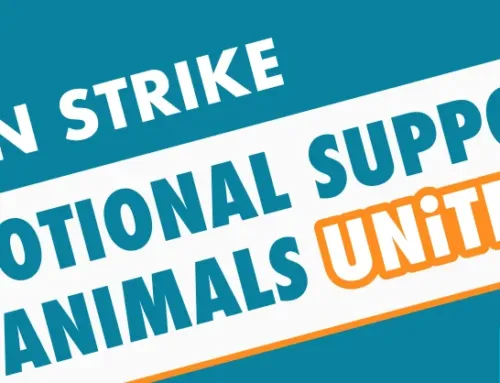History of Animals Assisting Veterans
The use of service dogs for veterans dates back to World War II when a stray Yorkshire terrier named Smoky got adopted by the community of soldiers and helped accompany doctors and nurses in military hospitals. Smoky is regarded as one of the first therapy dogs to serve American soldiers. The first record of animal therapy becoming applicable for veterans was during a Veteran’s court in Buffalo, New York in 2008. This established a court system for veterans wishing to apply for animal therapy and helped aid in therapy benefits for veterans with mental disorders such as PTSD and those with substance abuse. From there, the first assisted therapy animal was introduced in Novi, Michigan in 2013, allowing veterans to have support animals in court through the Canine Advocacy Program. This also established therapy animals as “working animals” in court presence, enabling the development of animals and their correlation with veterans health to continue to be studied (Handbook on Animal-Assisted Therapy).
In recent years, the progression of animal therapy and other related services in regards to veterans has significantly increased over time. Multiple organizations such as the American Humane Association, Banfield Foundation, American Veterinary Medical Association, K9 for Warriors, and Pet Partners have all created programs for veterans to apply for a service-related animal to aid in mental health. For instance, the American Veterinary Medical Association claimed their support for the Veterans Equal Treatment for Service Dogs Act, which states that the Department of Veteran Affairs should not restrict the use of service dog on any department facility. According to the act, the directive that allowed those animals to preside on any VA-sanctioned property expired in March of 2016, leaving many veterans without the ability to take their service dogs with them.
Today’s Research and Veteran Recovery
While research has shown significant benefits to veterans with PTSD, animal therapy and other related services, have not been FDA approved. While today’s treatments involve a variety of methods, including medication, individual and group therapy, and changes in lifestyle, to date, the most effective prescription tools to fight symptoms of PTSD are serotonin re-uptake inhibitors, which is considered to be the only FDA-approved method known. This is due to the research conducted in the 1950s into early 1960s, which identified the biochemical explanation for disorders such as depression.
According to the National Center for PTSD, maintained on the VA website, it argues that psychiatric service dogs might hamper recovery by rendering veterans unable to function without a dog at their side. While the VA offers coverage for veterinary care for service dogs for veterans with physical injuries, it does not provide the same benefits for psychiatric service dogs. However, in 2011, the VA began their studies, enforced by the S. 1495 Bill, which states that Congress encourages these studies to pay for the amount of debt the United States owes to its veterans and soldiers. This study is said to conclude in 2019.
How do Pets Help U.S Veterans
According to a study conducted by Purdue Univerisity, service dogs, in particular, are said to help veterans lower their symptoms related to PTSD, quality of life, and social participation. Out of the 141 individuals that have chosen to participate in the trial, half of the sample of participants were on the waitlist to receive a service dog and the other half already had a service dog. Many of the participants, as well as the data study itself, concluded that the use of service dogs can ultimately create “clinically meaningful improvements in PTSD.” Another study, conducted by the American Psychiatric Association back in 2016, made an argument that adopting a pet can overall create better benefits for veterans with PTSD rather than applying for a service dog. The pilot trial showed that over three months, the dog group showed significantly more improvement in PTSD symptoms than the control group, leading to improved happiness, a decrease in stress, and enhanced relationships with others.
Qualify for an ESA Letter Today
Get the Love and Support you deserve!









Hello, I was wondering, my husband is a Marine Veteran and we recently tell our landlord about our service dog. One of her stipulation is that the dog can not use the yard at all for biological needs. Is that right? Or she’s wrong for that?
There is unfortunately no easy answer to this question, as it may depend on whether the landlord has a legitimate basis for preserving the health and safety of the yard for other residents. If the yard is space that you are leasing and is also needed as a relief area to accommodate your disability, there may be an argument for allowing it as an accommodation.
My Son & daughter-in-law Just moved home from him getting out of the Army. They have 2 service dogs and are staying with me at my condo until they buy a house. I’ve done all the necessary paperwork but now my neighbors are petioning to have the dogs removed. Any Suggestions?
A person can live with their service animal or emotional support animal, even if your neighbors are petitioning to have the dogs removed. It is within their right to live with their assistance animal. Please thank them for their service.